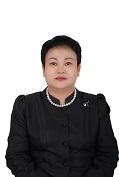
Jongkol Akahat
Blood Transfusion Centre, Thailand
Title: The development of LPPC in PAS in Blood Transfusion Centre: Faculty of Medicine Khon Kaen University, Thailand
Biography
Biography: Jongkol Akahat
Abstract
Background and objective: Platelet additive solutions (PAS) are crystalloid nutrient media used in place of plasma for platelet storage. They replace 60-70% of plasma in platelet components. So the amount of storage plasma can be decreased. Platelet stored in PAS have been demonstrated to have a lower risk for allergic transfusion reactions and appeared to have equivalent clinical efficacy for controlling bleeding, compared to platelets stored in 100% plasma. We try to bring PAS to replace plasma in making leukocyte poor platelet concentrates (LPPC) compared with conventional methods that use plasma, 1 bag of total buffy coat 4 units.
Objective: The objective of this study was to prepare LPPC in PAS in our routine work, instead of the traditional LPPC.
Methods: PAS and plasma using a ratio of 65:35 in accordance with the standard reference. Then LPPC in PAS were measured for the volume, content of platelet concentrates, white blood cell contamination and the titer of anti-A and anti-B compared to traditional methods.
Results: LPPC in PAS had volumes 304±20 ml, content of platelet concentrates 2.8±0.5X1011 cells/unit and had 0.1X109 white blood cells contamination. LPPC from traditional methods had volumes 324±16 ml, contents of platelet concentrates 3.9±0.3X1011 cells/unit and had 0.1X109 white blood cells contamination. The titer of anti-A and anti-B in LPPC in PAS is less than or equal to 64, all of which are classified as low titer, but LPPC from the traditional way with a titer of anti-A and anti-B over 64 about 20 %.

